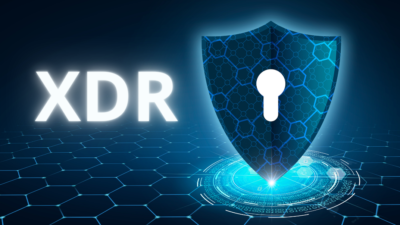Can Python’s simplicity and versatility unlock the complex world of blockchain development?
Crux: When we are talking about blockchain, my sleeves are always rolled up. But when we talk about a technology (a backend programming language), high-level like Python, I need to double-check. What if it has lost relevance, or the integration with emerging technologies does not simply tick? It might be the case that it used to work well before the integration, like the old school thought, but the modern twist does not make people glance again?
My intent here, before I get onto this blog, is that: Your brand, your website, your app should get Googled, over and over again. This could be made possible with the right set of technologies, which fulfill the requirement and implement the idea as it was told to the development team, by the client for the very first time.
Even if your visitors, your customers, your potential clients type, “Your website name”. first time in months, go to the alternatives, compare, and all blue links are covered – that’s the intent.
The rest of the time, it is GPT for them faster. Contextual. Fewer rabbit holes. And with ShopifyGPT coming, even that last-minute search might vanish.
We have always been early adopters of anything that boosts efficiency and reduces cognitive clutter, and apparently, we’re not alone.
Google search is now shifting to synthesis. No one requires 10 links for the same topic. They want one wholesome answer. People want someone to think with them. All answers that we quote here in the blog have been picked from somewhere, but guess what – Perplexity/GPT/Meta already pulls their answers from Reddit, Wikipedia, even G2 to ensure that the answer is shaped by how people think, rate, and review.
AI never worries about our keyword strategy, but we need to. But we also care about our credibility, clarity, structure, and original thought.
Let’s dust off some, and figure out the answer to the question in context. Why and how is Python use with Blockchain? What opportunities and challenges does it bring?
We are amid innovation and experimentation. Scientists, engineers, developers, test engineers, and coding experts are not scared about reaching out and putting their best foot forward. They pinch every technology, burst every bubble, and gel up ideas to formulate a new concoction.
One such combination is the use of Python with Blockchain, or vice versa. This new school of thought offers a fresh beacon of home, unparalleled security, transparency, and decentralization.
The use or the idea of Blockchain is still a mystery for common people. The only thing they know is that it owes a lot of money, or it can fetch a lot more than the general currency. But still many of us wonder how to harness its potential. Can it secure the transaction and give us 100x value? Now, here a kick of Python spices up the idea with its simplicity, flexibility, and extensive libraries.
Python’s syntax is suitable for smart contract development, also because of the presence of Web3.py and support for Ethereum. Python programming facilitates rapid development to quickly build and test blockchain-based applications, reducing the time and cost associated with development. But gelling with blockchain does not mean that Python applications cannot have AI or IoT enabled.
What Helps? Veins That Carry Blood To The Heart Of The Python – Blockchain application?
Python frameworks (of course, without any doubt). Web3.py, a Python library that interacts with the Ethereum blockchain, provides a simple and intuitive API for developers to build Ethereum-based applications. Py-Solc, a Python wrapper for the Solidity compiler, enables developers to compile and deploy smart contracts written in Solidity.
eb3.py enables Python applications to interact seamlessly with the Ethereum blockchain, facilitating tasks such as sending transactions and calling smart contracts. Brownie simplifies the creation and deployment of smart contracts on the Ethereum Virtual Machine. Brownie offers features like an in-built console for project interaction and supports both Solidity and Vyper contracts.
Vyper prioritizes security and simplicity, aiming to provide a safer alternative to other smart contract languages by eliminating complex features that can lead to vulnerabilities. PyCryptodome is design for cryptographic operations to ensure secure handling of blockchain transactions. These frameworks collectively contribute to leveraging Python’s readability by unlocking new opportunities in the field.
Why Should You Believe Me?
Python is used to create backend systems, APIs, and other components that interact with the blockchain. Frameworks like Flask or FastAPI are commonly used for building RESTful APIs that can be used to interact with the blockchain.
While Solidity is the dominant language for smart contracts on Ethereum. Python is use to create and interact with smart contracts using libraries like web3.py. Python can also use for testing and auditing smart contracts.
Python’s ease of learning and use make it a great language for building and experimenting with blockchain concepts, such as creating simple blockchains for educational purposes or small-scale projects.
Web3.py is a powerful Python library that simplifies interaction with the Ethereum blockchain. Brownie and Hyperledger Fabric SDK provide tools for interacting with various blockchain Development platforms.
Python is a valuable language for building various components of blockchain Development applications, especially for backend development, testing, and prototyping. Its clear syntax and extensive libraries position it as a formidable tool for blockchain development, enabling rapid prototyping and seamless integration with emerging technologies.
Consider These Two Cases:
| Supply Chain Transparency Problem: A food company needed traceability from farm to table. Solution: Built a Hyperledger Fabric-based blockchain using Python, reducing fraud by 30%. |
| Decentralized Finance Platform Problem: A startup wanted a secure, scalable DeFi app. Solution: Used Web3.py + Flask to create a lending protocol, now processing $ 5 M+ monthly. |
What Nice Things Can We Expect from This Combination In The Future?
Python developers can build complex financial applications that leverage the security and transparency of blockchain Development technology, with the rise of DeFi. It is an ideal choice for building supply chain management systems that utilize blockchain technology. With the increasing need for secure identity verification and authentication, Python developers can build blockchain-based solutions that provide unparalleled security.
Challenges In Python for Blockchain Development
Scalability, security, and regularity are three adjectives in short that pose a challenge as the application grows. While Python is fast, it may not be the most optimal language for computationally intensive tasks within blockchain Development, such as certain cryptographic operations. While there are libraries like web3.py, the number of specialized blockchain libraries is not as extensive as for some other languages.
As an interpreted language, Python may lag behind its compiled counterparts in execution speed, potentially impacting performance-critical blockchain operations. Python’s Global Interpreter Lock becomes a bottleneck in multi-threaded applications, posing challenges for scalable blockchain Development solutions. Dynamic typing and late binding in Python require meticulous coding practices to prevent vulnerabilities in blockchain applications.
How Python Use For Blockchain Deployment?
What if the language you already speak fluently could unlock one of the most revolutionary technologies of our time? Can Python—a language praised for its simplicity—truly navigate the complexity of blockchain Development?
Throughout this discussion, Python can serve the higher purpose of finance, supply chain, logistics, distribution, banking, healthcare, and several such industries that require speed and security.
So, is it not clear that the union of Python’s versatility and blockchain’s integrity isn’t just convenient, but catalytic?
And if that’s the case, why wouldn’t developers seize this opportunity to reshape entire industries?
Conclusion
Did you find this useful? Contact us today to learn more about our Python development company.
Without overwhelming you with a lot of information, we are about to provide a basic idea: Python and Blockchain are a great combination when combined for a project. It will work wonders. This is because their libraries and frameworks are compatible or require similar environments for development. The syntax of Python is simple, scalable, and flexible, which makes the outcome versatile.


